The Amazon Rainforest - A Guide by Dr. Suika, and the Kingdom of Science
- aboardtheperseus

- Jun 12, 2021
- 8 min read

For the entirety of the current arc, and the last few chapters, this is the region that the story has been focused on. It is a place of the world that is quite well known to us readers. Even though some of us might not have been there in person, it has quite the reputation.
However, it is not exactly the first forest that has been introduced in the story. At the very beginning, Senku, Taiju and Tsukasa were all living in a forest. Though this one was courtesy of the land overgrowing with vegetation after millennia of no one being around. The forest they lived in was also relatively safe as well. Aside from an animal attacks. Or the risk of eating anything poisonous.
When they reached America, they spent some time in a forest full of redwood trees. Some of these trees may have been alive before the first petrification and are thousands of years old. The wildlife there now includes alligators, because of shifts in the climate that allowed their territory to spread. Otherwise, they had no problem traveling through it as long as they avoided Stanley.

The Amazon rain forest is remarkably different in this regard. Quite frankly, it is one of the most dangerous places on the planet. Senku gave an idea of how dangerous it is when they were en route there.

For example (A situation that was not explored in the manga), even urinating in the rivers of the Amazonas can kill you. There is a parasite that gets attracted by that, swimming up the urethra and into the genitals. They infect the body, and they are hard to get rid of. One method to solve this with male patients is well…. amputation.
The parasite itself is called the Candiru.
Of course, this is not a parasite that exists all over the forest. Additionally, there are several useful things that can be obtained from the rivers of the Amazon. Such as food, in the form of fish. Or seashells, which can be used in science experiments to obtain calcium carbonate which was described to be the most important element to revive civilization.
From our character’s adventures in the Amazon so far, we have seen quite a bit about the place. Both in terms of flora and fauna.
The Amazon flora includes quite a few species. The moment they arrived there, Xeno burned down plants of the Apiaceae family, as well as Artemisia Genus. The Apiaceae family is a diverse group of plants which includes vegetables, herbs, and spices.
These plants have various uses in modern day medicine, ranging from asthma to rheumatism. There is a catch however, in that these plants can be toxic if mishandled. Water hemlock, for example, has killed cattle who drink the water that it grows in. Anethum gravioles (dill) is used as a biopesticide. Caraway has been used in agriculture as a sprouting inhibitor, antifungal agent, and insect repellent (What Xeno did, basically).
The Artemisia Genus is also a diverse group of plants, including the likes of wormwood and mugwort. Like the apiaceae genus, these plants are also used for medicinal purposes (Coughs and stomach upsets included). The medicinal effects can also be used against parasitic infections such as roundworms, tapeworms, and pinworms. Curiously enough, a while back artemisia plants were used in the treatment of malaria. They were later outlawed by WHO, but with Xeno’s mention of mosquitoes, you get an idea of how effective these plants are against the parasites. Also, artemisia plants are still used to treat malaria in Eastern medical practices.
Not the first time that Eastern medicine has made an appearance in the story, mind you. Back in Ishigami village, Chrome was revealed to have a large assortment of herbs that are useful for medicine.

From these panels, we get an idea of the flora differences between the Amazon and Japan.
More on the plant life in the Amazon, there are those that are edible, of course. It is possible to live off the forest. There were two instances we saw of Suika obtaining fruits to eat from a tree. The first of this being when they entered the Amazon.
The second is from the information she obtained from Chelsea’s map, in chapter 195.
The fruits are not named, but they look like mangos.
There were jaboticaba berries, from chapter 196.
Fun fact, aside from being eaten, these berries can also be used to make jellies, jams, juice, and wine. They ferment quickly after picking, which would have made it easier for Suika to prepare alcohol for nital. The placement of this panel seems to imply that it's what she used for alcohol.

When Senku and Taiju were living off the forest in Japan, we also got examples of some of the plants they had around. There were wild berries (Grapes), but unlike the jaboticaba, these were not exactly sweet. Probably a result of them not being ripe though. Rather than poison.

Aside from the grapes, there were also:

a) Amanita virosa
Known in Europe as the destroying angel, this fungus is deadly (As already pointed out by Senku). Within 24 hours after eating it, you can experience kidney or liver dysfunction, which leads to death.

b) White beeches
Edible mushrooms, even used in cooking recipes in Japan. They can be eaten raw or cooked, though it is recommended to eat them when cooked since the flavor is vastly superior.

c) Amanita muscaria
Not quite as poisonous as amanita virosa, but still poisonous regardless. These mushrooms are also known as fly agaric, since they can attract and kill flies. Before eating them, they must be boiled in water. Side effects of eating them undercooked include hallucinations and being nauseous.

d) Mugworts
We had mentioned these earlier, but to elaborate further, yes, they are edible. They also have medicinal properties, being used to cure ailments such as diarrhea and constipation.

e) Wolfsbane
A plant which is used a lot in media as a natural weakness to werewolves. Reality is not so kind though. Yep, even doing as little as touching wolfsbane can be toxic. A gardener in 2014 passed away after scraping against it in another person’s estate. Side effects include upset stomach, and they can even slow your heart rate (Which is fatal).
Onto the fauna side of the Amazon, where the story did not hold back in showing just how many different animals live there. There was at least one new animal species in every chapter. In Japan, we only saw monkeys and lions in the forest.

In the Amazon, we saw all kinds. Ranging from large animals to small ones. Again, from the moment they got into the forest, Senku talked about the parasitic chigoe flea, giant leeches, and bloodsucking kissing bugs.

Leeches and bloodsucking kissing bugs are a bit self-explanatory; they are parasites that suck the blood from their hosts. The chigoe flea is a bit more complicated. They are the world’s smallest flea, and attack both humans and other animals. They burrow themselves in the skin of hosts and lay their eggs there. A full-blown infestation of these fleas is known as tungiasis.

So how do you deal with such animals, which can easily attack you from underfoot? By having footwear on A concept that was explored in the manga. The Kingdom of Science scientifically processed rubber into boots, but in the past the natives would cover their legs with latex from the trees in order to get rubber. An unrefined method, but it works in defending one against the dangers of the Amazon.
Even the likes of Tsukasa and Gen, who have gone practically the whole manga without shoes, have had to put on boots while within the rain forest.
Other forms of footwear that we have also seen while in the Amazon were seen in the shoes Suika made for herself after reviving. And also the cleats that Stanley and his men have had on.
Further into the forest, there were the mosquitoes that we touched on earlier in the post. Xeno mentions that they are ferocious insects, which is indeed true. Aside from malaria (Which is the most known disease carried by mosquitoes), they also carry other diseases such as yellow fever and Zika.
In the manga, we saw Xeno dealing with the mosquitoes by burning plants to kill them. But is this the only way to deal with such an annoying pest? No, the natives of the forest discovered other means through which to repel mosquitoes. One of them was to cover themselves in mud. They were also very selective of the areas that they settled in, choosing to live in the dry areas of the forest (Since mosquitoes prefer humid areas).
The mosquitoes, while dangerous, are not the most dangerous creature in the Amazon. That honor goes to the army ant.

They are capable of overwhelming and taking apart anything within minutes. Sometimes even seconds.
Despite this, there are ways to deal with them. Every living thing on the planet has a weakness. For army ants, it comes in quite a few ways. Modern methods of dealing with them include using insecticides. One can also use a soap solution to kill the ants, or apple cider vinegar.

Terro, which is a mixture of sugar water and sodium borate (Borax) can also be used to deal with army ants. Spray it around the area where the ants are, and they will flock to it and eat it. The ants will then proceed to carry some back home to their colony, and this eradicates them all. Borax is commonly used as a household cleaner, and laundry detergent.
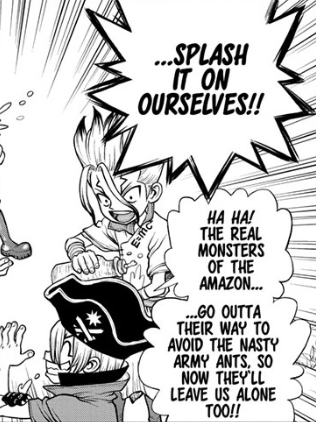
For the kingdom of science, they created an extract from the ants themselves. Chelsea admitted that she learned about this from the locals who lived in the Amazon. This extract was to repel other creatures, making them think you are an army ant. So in their case, they made use of the army ants, rather than exterminate them as a threat.
There are other types of ants who live in the Amazon. One of them I wish we had seen in the story are bullet ants. The reason for their naming is rather simple. Their sting is equivalent to the pain of being shot by a bullet.
A certain tribe in the Amazon uses these ants as part of their initiation ritual. The tribe, known as the Mawe tribe, submerge hundreds of bullet ants in a natural sedative, rendering them unconscious. These large ants are then woven into gloves made of leaves, with their stingers pointing towards the inside of the glove. When the ants regain consciousness, the gloves are placed on the hands of young men. One is supposed to maintain the glove for up to five minutes.
A few chapters passed, and we were introduced to another of the Amazon’s most dangerous creatures. The Brazilian Wandering Spider.
Wandering spiders have a notorious reputation. Stuff like bananas gets shipped overseas, so these spiders tend to crawl into the baskets with the spiders. Several people have gotten bitten after loading them up. From these incidents, the wandering spider got a nickname ‘banana spider'.
The larger creatures in the Amazon are largely like the ones we see on documentaries such as National Geographic. These include:
a) Giant snakes (Most likely an anaconda) - When it comes to the Amazon food chain, all four Anaconda species are practically on top, with their only predators being the occasional Caiman or Jaguar.
b) Jaguars - It's estimated that half of the world's jaguars live in the Amazon. This cat is the top predator of the rainforest, but is seen as a symbol of protection and power.
c) Squirrel monkeys - If you've ever thought of having a squirrel monkey (more than one, since they're social) as a pet, be prepared to be spending a lot of time either entertaining them or cleaning up after them when they get bored and destructive.
d) Capybara - the largest rodent on earth, is always just chillin and a friend to all. They are essentially large guinea pigs.

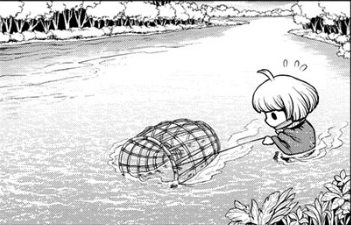

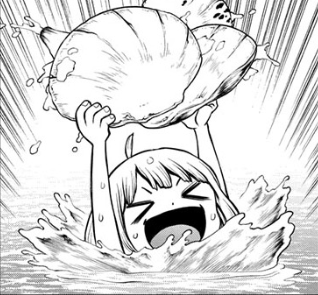

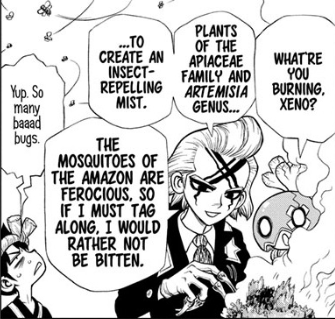




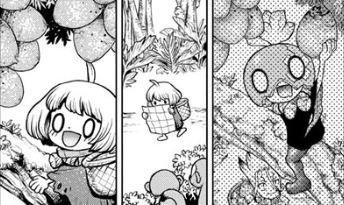







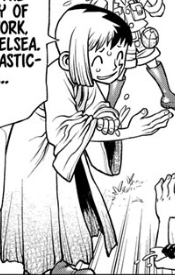





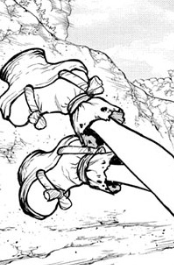







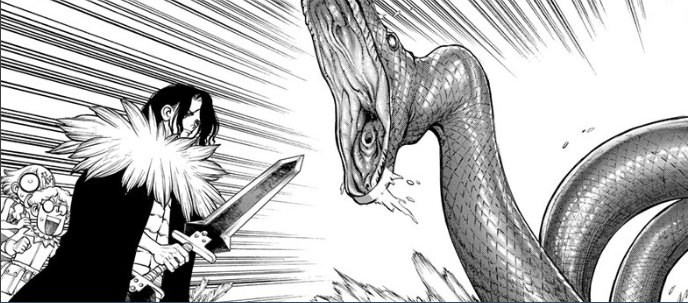





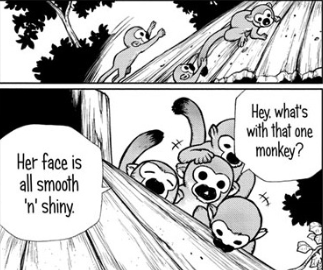
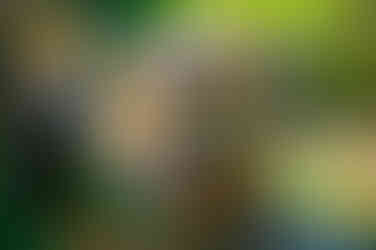



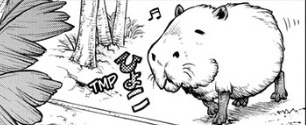
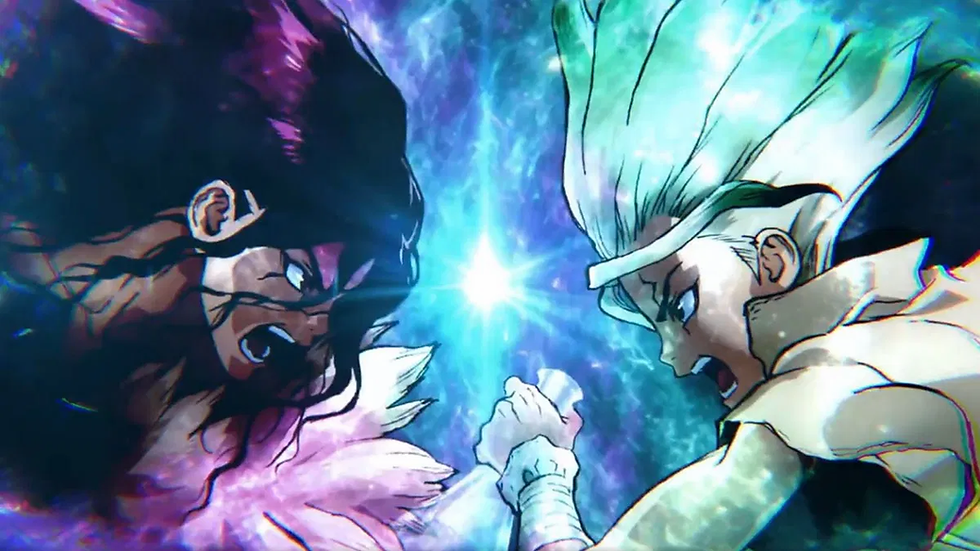
Comments